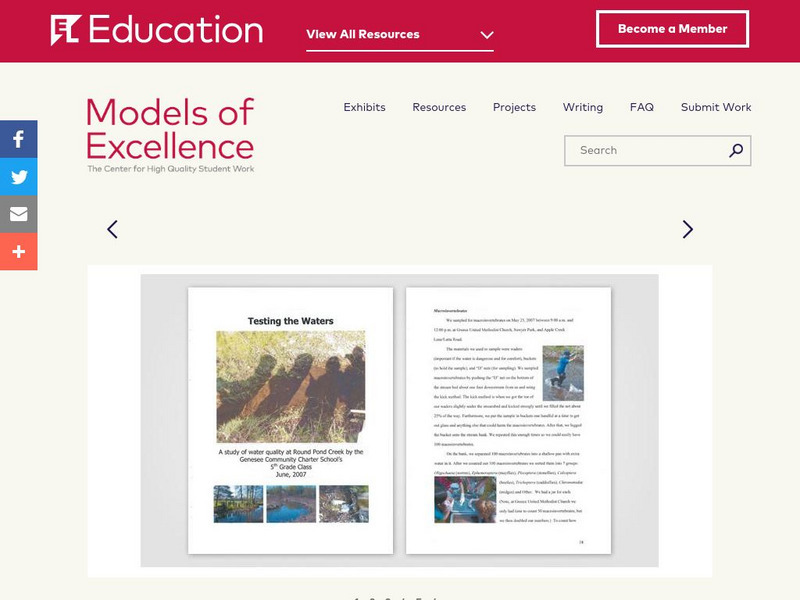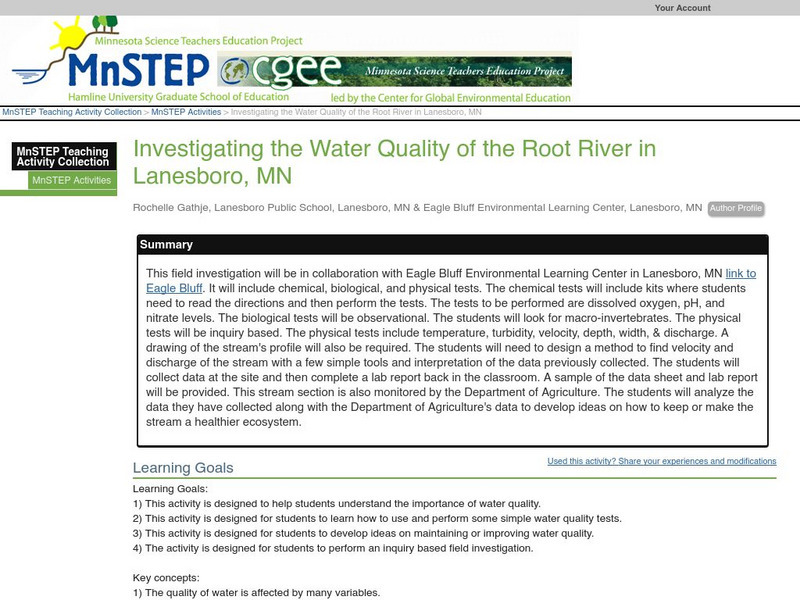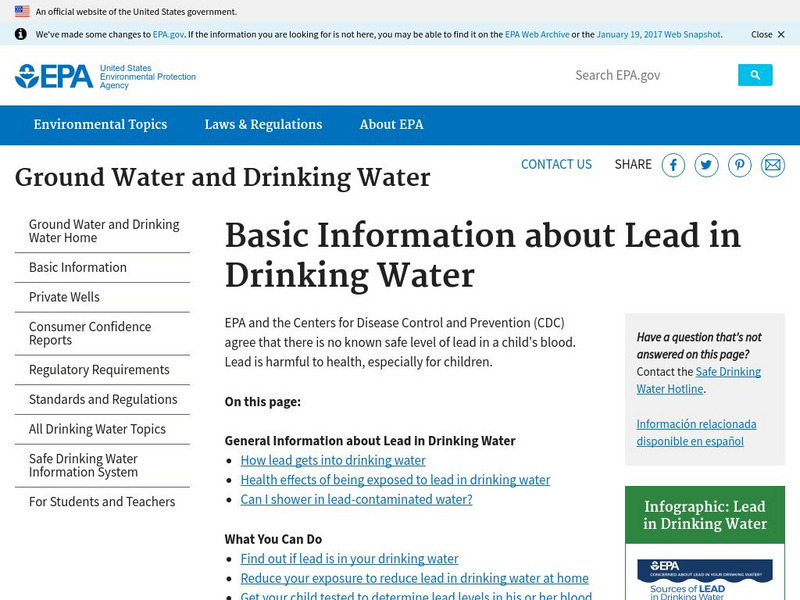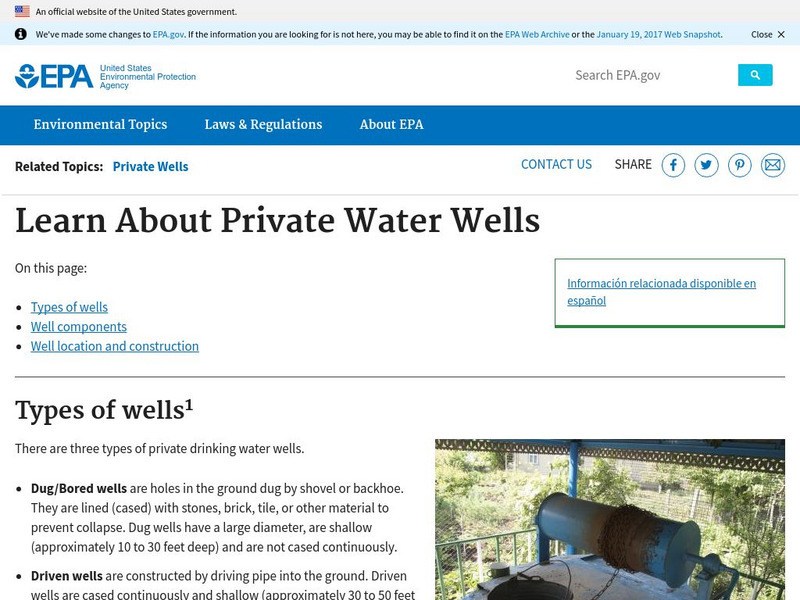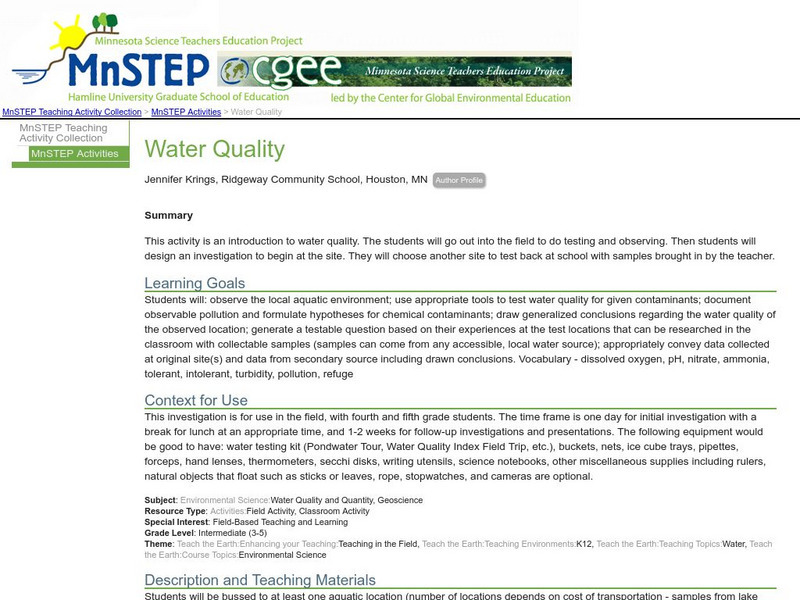Curated OER
DNA Isolation
Students use scientific methods to investigate the concept of DNA. They observe the DNA of human cheek cells. This is done with the use of a lab experience. Students record their observations and reflect upon on how each organism is...
Curated OER
ISOLATION OF DNA FROM ONION
Students perform a lab in which they extract DNA from onion cells. Students break through the cell and nuclear membranes and then break down the protein that the DNA is wrapped around.
Curated OER
Transformation of E. coli with Antibiotic Resistance
Students participate in an experiment in which they transform an E. coli cell. They discover how the genetic make-up of the cell can be changed by added foreign DNA. They answer questions to complete the lab.
Curated OER
What is Groundwater Pollution Doing to the Neighborhood?
High schoolers explore the impact of groundwater pollution on health. They examine the carcinogenic contaminants and their possible sources. Students develop methods to lessen or eliminate the pollutants from the environment.
Curated OER
Biofuels Blast!
Students observe yeast fermentation using different energy source. In this chemistry instructional activity, students measure the gas collected in the balloon. They upload their observations on the internet so they can share it with kids...
Curated OER
Texas Estuary Project
Students practice the proper lab techniques of coring, seining, taking temperatures, and salinity. Students analyze and graph data. Students write a 3 part essay and correctly draw and label a food web of their field site.
Curated OER
Outdoor Seed Sowing
First graders identify vegetables and flowers that can be grown from seed. In this seed sowing lesson, student learn the correct spacing and planting of various types of seeds. Students label plants.
Curated OER
Barnacles: Harder than Cement
Fourth graders watch the movements of the complex animal hidden inside the tiny barnacle shells. This lesson allows students to study the behavior, adaptation, and larval stage of the barnacle.
Curated OER
Construct with Solids
Young scholars discover which properties of solids lend themselves to building a tower through hands on trial and error and observation of others as they are building. They write down the steps it took them to build the tower and label...
Center for Innovation in Engineering and Science Education, Stevens Institute of Technology
Ciese Collaborative Projects: The Global Water Sampling Project
By testing your local water quality, you will be able to compare your results with students around the world. Register your class, and follow the project instructions. Additional teacher resources, references, and Ask-an-Expert sources...
TeachEngineering
Teach Engineering: Test and Treat Before You Drink
Students learn about water quality testing and basic water treatment processes and technology options. Biological, physical and chemical treatment processes are addressed, as well as physical and biological water quality testing,...
US Geological Survey
Usgs: Common Water Measurements
This site from the U.S. Geological Survey provides great definitions of seven measurements that can be taken on water. Includes pH, dissolved oxygen, and turbidity. Click Home to access the site in Spanish.
Other
Garden Club of America: Drinking Water Safety [Pdf]
An information page on understanding drinking water safety. It covers legislation, contaminants, private wells, water testing, water filters, and boiling water.
EL Education
El Education: Testing the Waters
Students tested water at several sites in a local creek and write a scientific paper showing their testing and results. Scientific papers include an abstract, introduction, methods, results, and discussion including recommendations...
University of Missouri
Microbes in Action: Classroom Activities: Water Quality Testing [Pdf]
In this experiment, students will test the quality of a water sample by observing the number of coliform bacteria. Coliform bacteria are found in human intestines and a large amount can indicate water contamination. Lesson plan gives a...
PBS
Pbs Learning Media: Simple Solutions
Amy Smith is an engineer who designs simple and inexpensive solutions to real-world problems. This video produced for Teachers' Domain features her innovative design for testing the safety of drinking water in the developing world.
Science Education Resource Center at Carleton College
Serc: Investigating the Water Quality of the Root River in Lanesboro, Mn
This field investigation will be in collaboration with Eagle Bluff Environmental Learning Center in Lanesboro, MN link to Eagle Bluff. It will include chemical, biological, and physical tests. The chemical tests will include kits where...
Other
Wet in the City: Read a Water Meter and Water Bill [Pdf]
In this lesson, students will monitor the school's water meter to get an overview of the total water consumption and the cost of that water which will help them develop an idea of water consumption patterns and how much money the school...
Other
Derm: Water Cycles and Catchments
Students develop an understanding of the water cycle and water catchments. This learning module is divided into introductory, developmental, and culminating activities, and also has several assessment strategies. Resource sheets...
US Environmental Protection Agency
Epa: Basic Information About Lead in Drinking Water
Learn about the threat of lead in drinking water and what actions you can take to prevent or deal with exposure.
Alabama Learning Exchange
Alex: Surface Water Testing
In this environmental science lab you will chemically test a nearby creek or pond for dissolved oxygen, pH, alkalinity, hardness and turbidity. This is a field test and will determine the water quality of standing body of water. The lab...
US Environmental Protection Agency
Epa: Private Drinking Water Wells
Provides information on what to do after a flood to protect well water from contamination, the testing of private well water, and protecting private well water.
Science Education Resource Center at Carleton College
Serc: Mn Step: Water Quality
After observing the local aquatic environment and testing the water quality, students formulate a testable hypothesis. They next choose a second location, collect samples to bring to school, and test the water quality. Data is organized...
PBS
Pbs Learning Media: River Rewilding: Advanced Water Quality
In this unit, students will try to improve stream quality and reduce human impacts by taking action.This Advanced Water Quality unit is packaged into three smaller parts: Part 1: Stream Habitat Assessment; Part 2: Macroinvertebrate...














